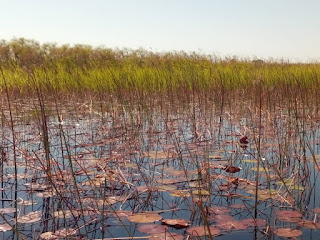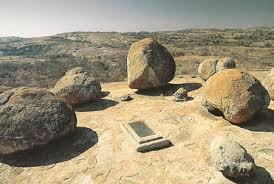WONDERS OF CHILDHOOD – WHITE MAN!
Our grass-thatched, mud, four-cornered hut stood between two old mango trees near the village' s family Kabuli (graveyard), at the very end of Mukanga village. When the burial ground overgrew, chilling bouts of fear rushed through me when passing by it as I grew up believing ghosts do harm; especially if you whistled in the night within the vicinity of the cemetery. The only time I felt relieved in the night was when the tall grass around the burial place was burnt.
I couldn't figure out why we lived so close to ghosts if they were that harmful. Why would dead relatives become that hostile as to hurt living members of their own family for such petty acts as tooting?
Beyond our hut was a vast plain leading to the next village named Mutoni, aka Maishike, which was neighbouring another small village called Chikonde. In the east was Iyamba, the capital of Ncheta Island of Chief Bwalya Mponda.
We had many neighbours in front of us, some in small round huts fenced with "Iceece," a huge reed or fibre stranded mat used to protect huts from rain; it also served as storage space for firewood and other household utensils. Huts were situated a few meters apart in no particular order, spiced by two or three brick houses belonging to few 'wealthy' men of the village. In all, the huts and houses might have been around thirty to forty, all thatched. And all the people, without exception, were related to everyone.
The village overlooked the swamp leading into canals and channels which were traversed by people in canoes, boats, and other water vessels. This swamp was the primary fishing ground, especially for boys. It was also a fishing favourite for various birds. It's here that I first saw a wreckage of a small airplane that crashed near our village at a place called Kasanse, killing two white men on board. I wondered why two right-thinking adults could try to fly like birds in such a heavy metallic boat without endangering their lives! Until I grew up to see a number of planes fly over the village, some of them so close that I began to understand that maybe the Kasanse disaster was a genuine accident after all.
We had no health facility on the entire island. Government health staff used to visit islands at intervals using Choombo, a water vessel. The most famous Choombo was a self-contained 'huge' ship named Lucheleng'anga. And, it was this that introduced me to other wonders of my childhood! Because of its size, adults could announce its arrival when it was still far. They could see its mast and tell the women to prepare children for vaccinations and other under-five services. Lucheleng'anga brought both worry and excitement. Worry because I was so scared of injections while I was always fascinated by the sight of such a big thing floating on water.
I had seen many engine boats belonging to Christian Missions in Many Lands (CMML) missionaries and Catholic fathers before, which too were spectacles to us, children. But this big one and its sisters called Mastiff / Mwineng'anda, were too amazing! It brought medical supplies along with the clinical staff. At that time, all I knew was that health workers were also a special creation like missionaries. They donned smart white clothes only seen from white priests, gave people strange round tablets and injections without subjecting them to familiar massaging and divination processes. All they did was ask questions and, amazingly, knew what remedy to offer!
There was always someone among them who carried something around his neck that he put in his ears while the clock-like gadget rested on the patient's body. My mother told me that that device, stethoscope, was used to tell the Doctor what was wrong "inside a patient's body."
Since neither the Doctor nor the patient usually talked during such examination, what language did that tiny whiz use that the Doctor understood? What about the injection itself? How did they know exactly where to 'insert?'
There was war, as you may expect, one day when I was lured to go and see the inside of this marvelous liner. But I quickly realized that I was actually going to be vaccinated; I do not know against which but must have been smallpox or polio. The drama started when I saw the white man turn to me with a "needle," drew some liquid from a small bottle and getting ready to…!
I had already seen one girl, slightly older than me, come out wailing, holding her upper arm. I could feel my mom's hold on me tightening. I started pushing hard to get out of the ship. Mom and the white-uniformed, beautiful lady (nurse) were pushing me inside, towards the smiling Muzungu. I realised I was going in for a jab instead of seeing the beauty and enjoy the comfort of the inner part of the thing I admired so much from outside. Of course, they won! But with a lot of kicks in return! I was also compensated with another marvel, used syringe nozzles, we called them salalya, which I later used to 'inject' my friends during playtime!
When I was about seven, I was taken to school. My first teacher, Mr. Mainza, a huge, tall, and athletic figure who wore a pair of shorts most of the time, introduced us to a slate. A small rectangular green board on which we wrote with "white man's dried cassava," (chalk) and could easily erase without any problem. Moulding all sorts of things with a 'white man's clay' that left our hands as clean as before was another puzzle. I wondered what kind of ingenuity a white man possessed!
Slowly interpreting some scribbled maze for my mother from books was another interesting phase. Reading what a 'white man had written' was the envy of many adults in the village and made me feel very special.
The first time I saw a bicycle, I couldn't believe a person could balance a two-wheeled thing without falling. Again, my mother told me such was the magic of a white man. Hmmm...! Then I thought of my uncle's ITT Supersonic radio that sometimes broadcast 'confusing languages,' which none of us in the village understood. I wondered how people could sit inside that small thing, talk, and sing! At times, it brought many people together to listen to interesting programs in our language.
These things baffled me. As I grew a little older, I began to understand that there were so many things that I probably would need to learn, top of the list must be the wisdom of a white man. How does he create all these things? Also, because the white fathers could even speak our language so fluently while we couldn't utter a word from theirs, I regarded them as angels.
But there was one thing that left me confused. A white father, nicknamed Lwando Kalaba, on his way back to Samfya from his routine evangelical visit of islands, one day visited our fishing camp and found that we had tamed large-mouthed birds locally called Landwa Kaminamasembe. He was so surprised at how we managed to keep such attractive birds so close and that we could communicate easily with them. So, there was something that we, black villagers, could do that could impress a white man? Would they have limitations as well? Wonders never end!
 SoundCloud
SoundCloud





Comments